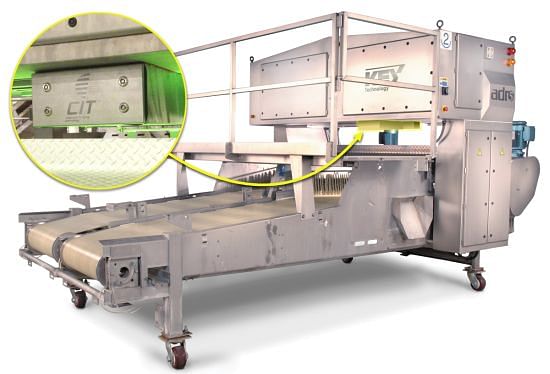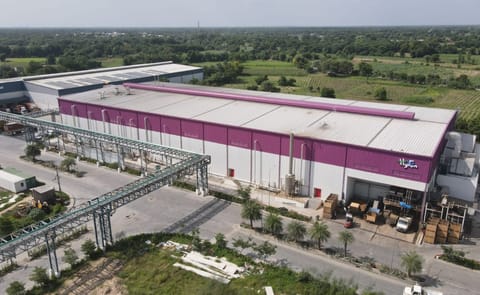Key Technology Introduces CIT® Hyperspectral Module for ADR5 to Detect & Remove Sugar Ends from Potato Strips
Solapas principales
Key Technology Introduces CIT® Hyperspectral Module for ADR5 to Detect & Remove Sugar Ends from Potato Strips

Key Technology introduces hyperspectral imaging on its popular ADR® 5 automatic defect removal system for potato strips.
Featuring Chemical Imaging Technology (CIT®), an advanced value-added hyperspectral solution that evaluates the chemical composition of objects, CIT detects “sugar ends,” an invisible defect that plagues potato processors, which the ADR then cuts from the wet strips, along with all other defects, to recover the good product. ADR 5 with CIT detects and removes sugar ends and other defects from potato strips to improve product quality while maximizing yields.
Key’s new CIT hyperspectral imaging module is available as an option on new ADR 5 systems and as an easy-to-implement in-field upgrade for installed ADR 5 systems.
The new CIT module is additive – the ADR’s previous performance, including detection capabilities and throughput, remains unchanged while sugar end removal is added. The new CIT hyperspectral module detects sugar end defects while the ADR’s Vis/IR cameras identify green defects and differentiate between potato peel and brown defects such as bruises and rot, enabling ADR 5 with CIT to detect and remove the widest range of defects on both peeled and peel-on potato strips. ADR 5 handles strips from thin shoestring to thick steak-cut French fries, automatically cutting out defects at production rates of up to 16,200 lbs. (7.4 metric tons) per hour.
Sugar ends, also referred to as dark ends, glassy ends, translucent ends, and jelly ends, is a physiological tuber disorder caused by environmental conditions. Potato strips made from sugar end potatoes exhibit undesirable dark brown areas after frying, caused by the higher concentration of reducing sugars caramelizing. The challenge is that sugar ends are invisible to traditional detection technology until after the product has been thoroughly fried, so potato strip processors can be unaware they have a sugar end problem until their foodservice customers fry the strips and complain.
The new CIT hyperspectral imaging system successfully detects sugar ends prior to frying. CIT is a proprietary solution developed by EVK and Insort that utilizes unique software and algorithms to process information from powerful broad-spectrum hyperspectral sensors and evaluate the chemical composition of potatoes. In July 2013, Key entered into an exclusive licensing agreement to deploy CIT in its products to enhance the value of its potato sorting capabilities.
“By marrying CIT with ADR, the operational benefits are maximized since the ADR system cuts the defects from the wet strips and recovers good product to optimize product quality while minimizing yield loss. Developing a CIT hyperspectral module for ADR 5 is an important step in improving the economics of successfully managing the occurrence of sugar ends,” added Azzaretti. “We’re also working to integrate CIT with other Key digital sorters to deliver new value-added solutions to our strategic partners in the potato industry.”
¿Te gustaría recibir noticias como esta por correo electrónico? ¡Únete y suscríbete!
Get the latest potato industry news straight to your WhatsApp. Join the PotatoPro WhatsApp Community!
Empresa Destacada
Contenido Patrocinado
Contenido Patrocinado
Contenido Patrocinado
Contenido Patrocinado










